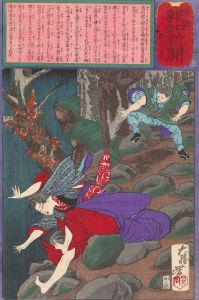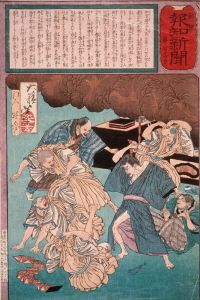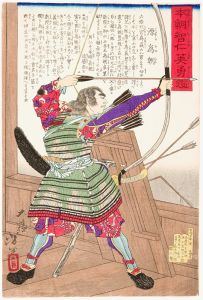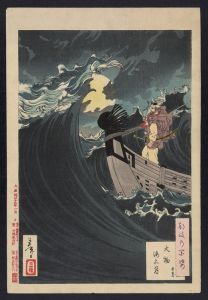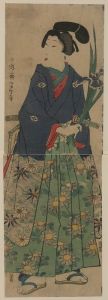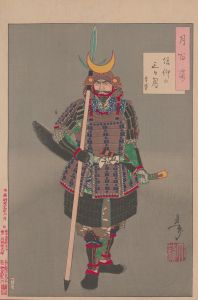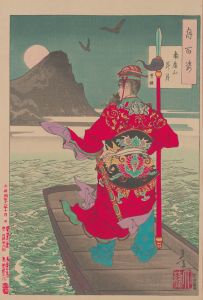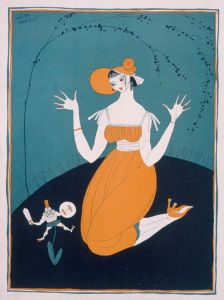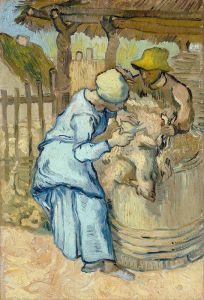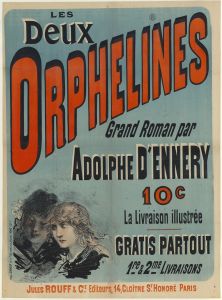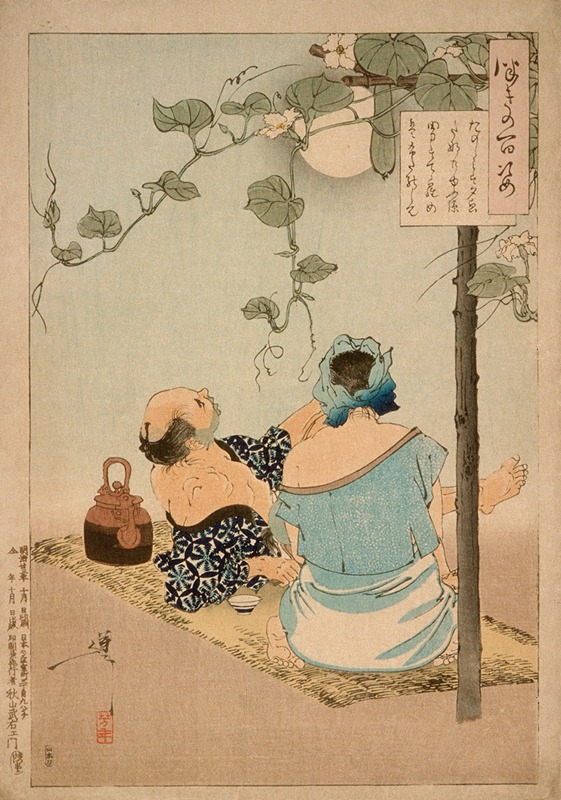
A Couple Enjoying the Flowering Evening Face Arbor
A hand-painted replica of Tsukioka Yoshitoshi’s masterpiece A Couple Enjoying the Flowering Evening Face Arbor, meticulously crafted by professional artists to capture the true essence of the original. Each piece is created with museum-quality canvas and rare mineral pigments, carefully painted by experienced artists with delicate brushstrokes and rich, layered colors to perfectly recreate the texture of the original artwork. Unlike machine-printed reproductions, this hand-painted version brings the painting to life, infused with the artist’s emotions and skill in every stroke. Whether for personal collection or home decoration, it instantly elevates the artistic atmosphere of any space.
Tsukioka Yoshitoshi (1839–1892) was a prominent Japanese ukiyo-e artist, known for his innovative and dramatic woodblock prints. He is often regarded as one of the last great masters of the ukiyo-e tradition, which flourished during the Edo and early Meiji periods. Yoshitoshi's works are celebrated for their technical excellence, emotional depth, and ability to bridge traditional Japanese art with the modernization of the Meiji era.
"A Couple Enjoying the Flowering Evening Face Arbor" is one of Yoshitoshi's woodblock prints, created during his prolific career. The artwork depicts a serene and intimate scene of a couple seated together under an arbor adorned with flowering evening glory vines. The evening glory, also known as "yugao" in Japanese, is a flower that blooms in the evening and is often associated with fleeting beauty and the transience of life, themes that were commonly explored in Japanese art and literature.
The composition of the print reflects Yoshitoshi's mastery of detail and his ability to convey mood and atmosphere. The couple's relaxed posture and the tranquil setting suggest a moment of quiet enjoyment and connection. The use of soft colors and delicate lines emphasizes the beauty of the natural surroundings, while the intricate patterns on the couple's clothing showcase Yoshitoshi's attention to detail and his skill in depicting textiles.
This print is an example of Yoshitoshi's ability to capture everyday life and human emotions in a way that resonates with viewers. It also reflects the influence of traditional Japanese aesthetics, such as the appreciation of nature and the concept of "mono no aware," or the awareness of the impermanence of things.
Yoshitoshi's work, including this print, was produced during a time of significant cultural and social change in Japan. The Meiji Restoration (1868–1912) brought about rapid modernization and Westernization, which had a profound impact on Japanese art and society. Despite these changes, Yoshitoshi remained committed to the ukiyo-e tradition, while also incorporating new techniques and perspectives into his work.
Today, "A Couple Enjoying the Flowering Evening Face Arbor" is appreciated as a fine example of Yoshitoshi's artistry and his ability to capture the beauty and complexity of human experience. Like many of his works, it continues to be studied and admired for its historical and artistic significance.





